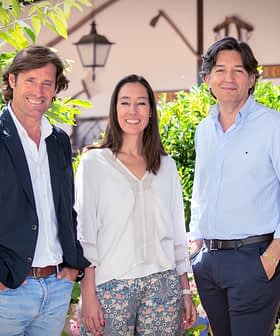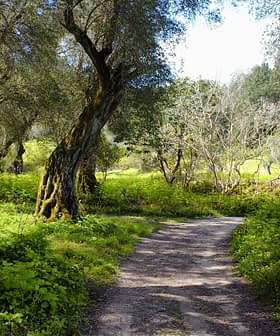Olive oil production is rising slowly but steadily in the province of Buenos Aires, fueled by new olive trees planted in the Coronel Dorrego district.
Olive trees were first planted in Coronel Dorrego about 50 years ago, 525 kilometers south of the national capital. Since then, they have expanded to cover about 2,500 hectares and contribute about half of the province’s annual olive oil production.
According to data from the Argentine Olive Federation (FOA), the province of Buenos Aires is responsible for two percent of national production. About 96 percent of Argentine olive oil production occurs in the western regions of San Juan, La Rioja, Catamarca and Mendoza.
See Also:Potential of Major Changes in Argentina Provide Hope for Producers, ExportersIn an effort to expand olive cultivation in the area, local producers have been working with the National Agricultural Technology Institute (INTA) to find the best places in the district to plant more trees and develop a regional brand.
Despite its markedly different climate from the more arid and mountainous western Argentina, José Massigoge, a researcher at INTA Barrow in Buenos Aires, told local media that soil and climate conditions are still amenable to olive farming.
“For instance, the area around Dorrego, particularly near the coast, possesses highly suitable soils characterized by sandy loam that offers excellent drainage – one of the essential requirements for the cultivation of olive trees,” he said. “While the olive tree is a resilient plant, it necessitates proper drainage for its roots, a condition that is adequately met in this region.”
Producers said the thermal amplitude promotes the fruit’s gradual ripening, which results in elevated levels of phenols and a high proportion of oleic acid.
Massigoge noted that “the cool temperatures during the early harvest contribute to the presence of polyphenols and other essential compounds, which impart bitterness to the oil. Additionally, this condition is advantageous for preserving the oil, ensuring high levels of durability over time.”
Federico Bottini, a partner at Agroliva, added that the significant shift between daytime and nighttime temperatures yields olive oils with interesting organoleptic qualities.
“Another notable distinction is the availability of water resources; the region receives approximately 600 millimeters of rainfall annually, which is considerably higher than that of the country’s largest plantation areas,” he said. “While irrigation is necessary in our region, it serves primarily as a supplementary measure. Furthermore, the cooler climate during the harvest season positively influences the quality indicators of the produce.”
“Although I do not possess specialized expertise in this field, I can attest that our oils consistently yield excellent results in both physical-chemical and sensory evaluations,” he added. “Consequently, we have consistently achieved favorable outcomes in various competitions.”
Argentina remains a relatively modest extra virgin olive oil producer compared to the largest producers in the Mediterranean basin. According to International Olive Council data, the country has yielded an average of 31,800 tons per annum in the past five years, making it the largest producer outside of the Mediterranean.
However, producers anticipate a harvest decline this year due to many groves entering an ‘off-year’ in the natural alternate bearing cycle, a lack of chill hours and extreme weather events.
Nevertheless, farmers continue to plant new olive trees across the country, especially in San Juan and La Rioja, to meet rising demand in the United States and Europe.
The first plantations in Buenos Aires started in the late 1940s. At that time, mostly Picual and Arbequina trees were cultivated, and production was carried out using traditional methods.
However, contemporary practices in the region have evolved to incorporate Arbosana and Koroneiki trees planted at high-density olive groves, which feature more than 2,000 olive trees per hectare.
Federico Hollender, the owner of Estilo Oliva in Coronel Dorrego, recalled adapting to more modern technology.
“We decided to learn, adopt the latest technologies in this activity and opt for the super-intensive system,” he said. “Then we started to plant more hectares with other varieties of olive trees, and we decided to continue growing.”
Producers are optimistic that olive cultivation will continue to expand in the province of Buenos Aires and support the launch of an international olive oil competition in the capital city.








